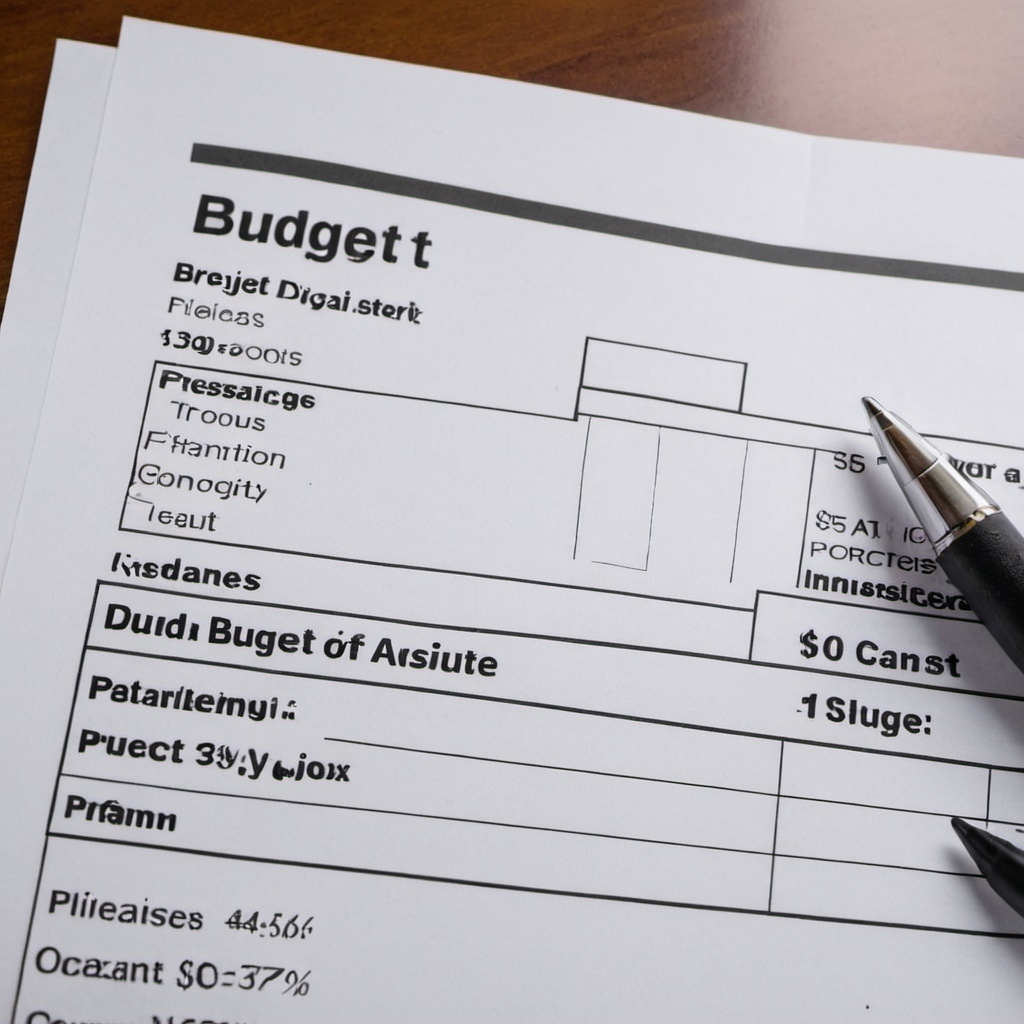Managing a fixed price project budget is a critical skill for project managers, requiring careful planning, vigilant monitoring, and proactive adjustments. Unlike time and materials contracts, where costs can fluctuate based on actual hours worked and resources used, fixed price projects are bound by a set budget agreed upon at the project’s outset. This fixed budget presents both an opportunity and a challenge: it provides financial predictability but also requires strict adherence to the budget constraints.
Fixed price contracts are often preferred in industries where clients need to control costs and avoid the risk of budget overruns. However, this type of contract also places significant responsibility on the project manager to ensure that all project deliverables are met within the agreed-upon budget. Achieving this balance can be daunting, especially when unexpected issues arise or the project scope evolves.
One of the primary challenges in managing a fixed price project budget is the risk of scope creep. Scope creep occurs when additional features or requirements are introduced into the project without corresponding increases in budget or timeline. This can quickly lead to budget overruns if not carefully managed. Effective scope management involves clear communication with stakeholders, rigorous change control processes, and a constant focus on prioritizing essential features over nice-to-have additions.

Accurate initial estimation is another crucial aspect of handling a fixed price budget. Underestimating the time, resources, or complexity of a project can lead to financial shortfalls and strained client relationships. Therefore, project managers must invest time in thorough planning and risk assessment, drawing on past project data and expert input to create realistic budgets.
Monitoring and controlling costs throughout the project lifecycle is essential to staying on budget. This involves regular tracking of expenses, comparing actual costs to the budget, and identifying any deviations early. Advanced project management tools and software can aid in this process, providing real-time data and analytics to help project managers make informed decisions.
Flexibility and adaptability are also key to managing fixed price projects successfully. Despite the best planning, unforeseen challenges will arise. Whether it’s a sudden supply chain issue, unexpected technical difficulties, or changes in client priorities, project managers must be prepared to adjust plans and reallocate resources to keep the project on track financially.
In short, handling a fixed price project budget requires a blend of meticulous planning, diligent monitoring, effective communication, and adaptive problem-solving. By mastering these skills, project managers can ensure that projects are delivered on time, within budget, and to the satisfaction of all stakeholders.
Managing a fixed price project can be challenging, especially when the budget starts to go over the original estimate. As a project manager, it’s crucial to identify the issues early and take corrective actions to bring the project back on track. Here’s a guide to help you course correct a fixed price project budget with practical examples.

Step 1: Identify the Problem
First, pinpoint the specific reasons why your project budget is derailing. Common issues include:
- Scope creep: Unplanned changes or additions to the project scope.
- Underestimation: Initial estimates were too low.
- Unexpected risks: Issues that were not anticipated during planning.
- Inefficiencies: Ineffective use of resources or time.
Step 2: Reassess the Project Scope
Review the project scope to ensure it aligns with the original plan. If there have been changes, discuss with stakeholders whether these changes are essential or if they can be scaled back. For example, if you’re developing a new website and additional features were requested, evaluate if these features are necessary for the initial release.
Step 3: Prioritize Tasks
Focus on the most critical tasks that deliver the highest value. Prioritize the essential components and consider deferring or eliminating lower-priority items. For example, if you’re working on a software project, prioritize completing the core functionality before adding optional features.
Step 4: Optimize Resource Allocation
Evaluate how resources are being utilized and make adjustments to improve efficiency. This could mean reallocating tasks to team members who can complete them more quickly or outsourcing certain tasks to specialized contractors. For example, if a developer is struggling with a particular module, assigning it to a more experienced developer can help save time and reduce costs.
Step 5: Implement Cost Control Measures
Introduce cost-saving measures such as:
- Negotiating with vendors for better rates.
- Reducing non-essential expenditures.
- Implementing more stringent approval processes for expenses.
For example, if your project involves purchasing materials, negotiate bulk discounts or find alternative suppliers offering lower prices.
Step 6: Enhance Communication
Ensure clear and consistent communication with your team and stakeholders. Regularly update them on the project’s progress, budget status, and any changes. Transparency helps in managing expectations and gaining support for necessary adjustments.
Step 7: Use Project Management Tools
Leverage project management tools to track progress, budget, and resources in real-time. Tools like Microsoft Project, Trello, or Asana can provide valuable insights and help in making data-driven decisions.
Practical Example: Website Development Project
Project Overview:
- Fixed price: $50,000
- Timeline: 6 months
- Scope: Develop a website with e-commerce functionality, user profiles, and a blog.
Issue:
- The project is 3 months in, and the budget is already 60% spent.
- Scope creep has occurred with additional feature requests.
- Delays due to underestimation of development time for complex features.

Course Correction Steps:
- Identify the Problem:
- Scope creep with additional features like advanced search functionality and integration with third-party services.
- Underestimated development time for e-commerce module.
- Reassess the Project Scope:
- Discuss with stakeholders and agree to postpone the advanced search functionality to a later phase.
- Focus on delivering core e-commerce and user profile features within the fixed price.
- Prioritize Tasks:
- Prioritize completing the e-commerce and user profile modules.
- Postpone the blog integration to after the initial release.
- Optimize Resource Allocation:
- Reassign the e-commerce module to a developer with more experience in similar projects.
- Hire a freelancer to assist with the user profile module to speed up development.
- Implement Cost Control Measures:
- Negotiate with third-party service providers for reduced integration costs.
- Cut down on non-essential team meetings and travel expenses.
- Enhance Communication:
- Schedule weekly update meetings with the team and stakeholders to review progress and budget status.
- Ensure all feature requests go through a formal change control process.
- Use Project Management Tools:
- Utilize Trello to track task progress and deadlines.
- Use a budget tracking tool to monitor expenses in real-time.
By following these steps, you can effectively course correct your fixed price project budget and ensure successful project delivery.
Summary
Managing a fixed price project budget demands careful planning, continuous monitoring, and proactive problem-solving. In a fixed price contract, the budget is set from the start, providing financial predictability but also requiring strict adherence to avoid overruns. This is particularly challenging when unexpected issues arise or the project scope changes.
One major challenge in managing fixed price budgets is scope creep, where additional features or requirements are added without increasing the budget or timeline. To manage this, clear communication with stakeholders, rigorous change control processes, and prioritizing essential features are crucial.
Accurate initial estimation is also vital. Underestimating time, resources, or project complexity can lead to financial shortfalls. Therefore, thorough planning and risk assessment are essential, using past project data and expert input to create realistic budgets.
Regular monitoring and cost control throughout the project lifecycle are necessary to stay on budget. This involves tracking expenses, comparing them to the budget, and identifying deviations early. Project management tools and software can help by providing real-time data and analytics for informed decision-making.
Flexibility and adaptability are also key. Unforeseen challenges, such as supply chain issues or technical difficulties, require project managers to adjust plans and reallocate resources to maintain the financial health of the project.
In summary, handling a fixed price project budget involves meticulous planning, diligent monitoring, effective communication, and adaptive problem-solving. By mastering these skills, project managers can deliver projects on time, within budget, and to the satisfaction of all stakeholders.






I do trust all the ideas youve presented in your post They are really convincing and will definitely work Nonetheless the posts are too short for newbies May just you please lengthen them a bit from next time Thank you for the post
Sure, I’ll try to incorporate your suggestion. Thanks for your feedback.